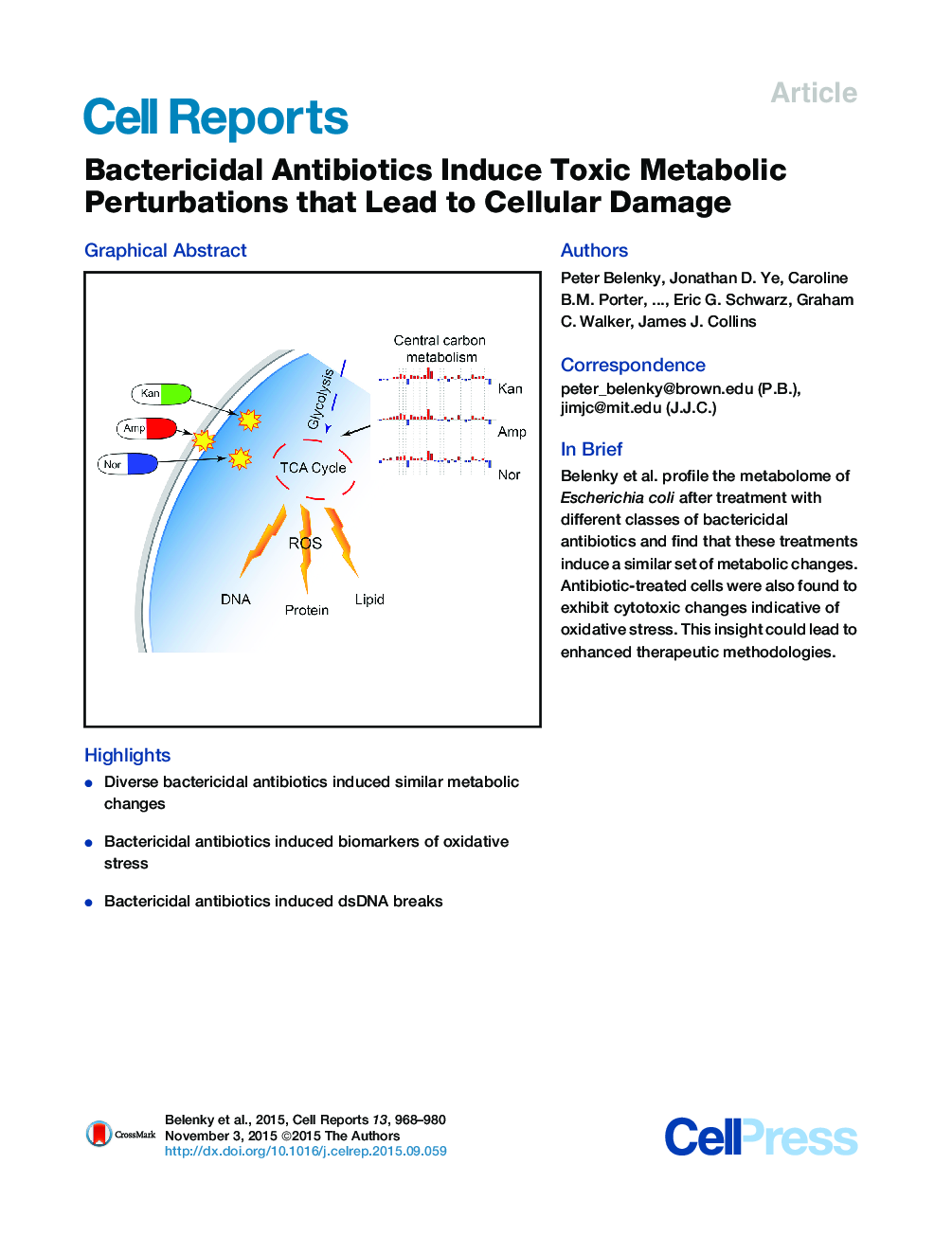| Article ID | Journal | Published Year | Pages | File Type |
|---|---|---|---|---|
| 2040748 | Cell Reports | 2015 | 13 Pages |
•Diverse bactericidal antibiotics induced similar metabolic changes•Bactericidal antibiotics induced biomarkers of oxidative stress•Bactericidal antibiotics induced dsDNA breaks
SummaryUnderstanding how antibiotics impact bacterial metabolism may provide insight into their mechanisms of action and could lead to enhanced therapeutic methodologies. Here, we profiled the metabolome of Escherichia coli after treatment with three different classes of bactericidal antibiotics (β-lactams, aminoglycosides, quinolones). These treatments induced a similar set of metabolic changes after 30 min that then diverged into more distinct profiles at later time points. The most striking changes corresponded to elevated concentrations of central carbon metabolites, active breakdown of the nucleotide pool, reduced lipid levels, and evidence of an elevated redox state. We examined potential end-target consequences of these metabolic perturbations and found that antibiotic-treated cells exhibited cytotoxic changes indicative of oxidative stress, including higher levels of protein carbonylation, malondialdehyde adducts, nucleotide oxidation, and double-strand DNA breaks. This work shows that bactericidal antibiotics induce a complex set of metabolic changes that are correlated with the buildup of toxic metabolic by-products.
Graphical AbstractFigure optionsDownload full-size imageDownload as PowerPoint slide
